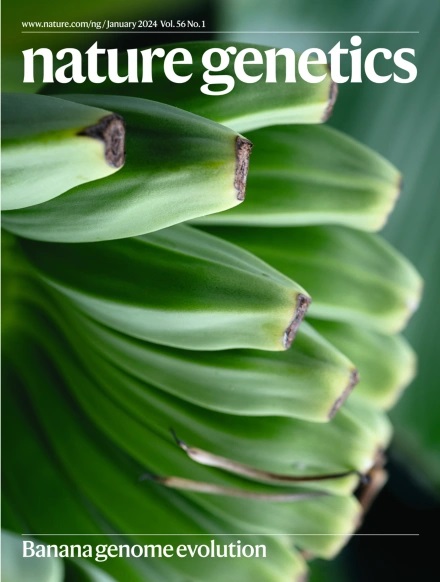Genomic landscape of multiple myeloma and its precursor conditions
IF 31.7
1区 生物学
Q1 GENETICS & HEREDITY
引用次数: 0
Abstract
Reliable strategies to capture patients at risk of progression from precursor stages of multiple myeloma (MM) to overt disease are still missing. We assembled a comprehensive collection of MM genomic data comprising 1,030 patients (218 with precursor conditions) that we used to identify recurrent coding and non-coding candidate drivers as well as significant hotspots of structural variation. We used those drivers to define and validate a simple ‘MM-like’ score, which we could use to place patients’ tumors on a gradual axis of progression toward active disease. Our MM precursor genomic map provides insights into the time of initiation and cell-of-origin of the disease, order of acquisition of genomic alterations and mutational processes found across the stages of transformation. Taken together, we highlight here the potential of genome sequencing to better inform risk assessment and monitoring of MM precursor conditions. The genomic features of precursor conditions of multiple myeloma provide multiple biological insights into disease origins and evolution, together with opportunities to identify those at highest risk of progression.


多发性骨髓瘤及其前体疾病的基因组景观
目前仍缺乏可靠的策略来捕获从多发性骨髓瘤(MM)前驱阶段到显性疾病进展风险的患者。我们收集了包括1,030名患者(218名患有前体疾病)的MM基因组数据的综合收集,我们使用这些数据来识别复发编码和非编码候选驱动因素以及结构变异的重要热点。我们使用这些驱动因素来定义和验证一个简单的“mm样”评分,我们可以用它来将患者的肿瘤置于向活动性疾病进展的逐渐轴上。我们的MM前体基因组图谱提供了对疾病的起始时间和细胞起源,基因组改变的获得顺序以及在转化阶段发现的突变过程的见解。综上所述,我们在此强调基因组测序在更好地为MM前体条件的风险评估和监测提供信息方面的潜力。
本文章由计算机程序翻译,如有差异,请以英文原文为准。
求助全文
约1分钟内获得全文
求助全文
来源期刊

Nature genetics
生物-遗传学
CiteScore
43.00
自引率
2.60%
发文量
241
审稿时长
3 months
期刊介绍:
Nature Genetics publishes the very highest quality research in genetics. It encompasses genetic and functional genomic studies on human and plant traits and on other model organisms. Current emphasis is on the genetic basis for common and complex diseases and on the functional mechanism, architecture and evolution of gene networks, studied by experimental perturbation.
Integrative genetic topics comprise, but are not limited to:
-Genes in the pathology of human disease
-Molecular analysis of simple and complex genetic traits
-Cancer genetics
-Agricultural genomics
-Developmental genetics
-Regulatory variation in gene expression
-Strategies and technologies for extracting function from genomic data
-Pharmacological genomics
-Genome evolution
 求助内容:
求助内容: 应助结果提醒方式:
应助结果提醒方式:


